Scented Candles
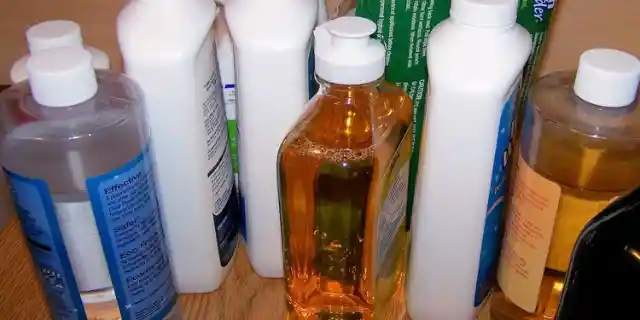
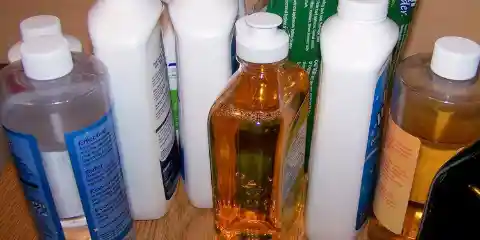
When looking for ways to improve your health, you might consider the food you put into your body, the exercise you’re getting, or ways to improve your sleep habits. But do you think about products that you use around your home, in the air, or even on your body?
These products can play a big role in how you feel, and if not paid attention to, could be the driving force behind reduced immunity, fatigue, and a host of other undesirable symptoms. Here’s a list of some of the most overlooked, yet potentially unhealthy products that many of us use on a regular basis…
Plastic Tupperware


Sometimes nothing quite says “home” like lighting your favorite scented candle. You light the wick and, within minutes, the warm, cozy scent of pine, pumpkin, or even clean linens, fills the air, reminding you that this is your safe place. But, how safe is it really? A growing number of studies are showing that your favorite scented candle may be emitting more toxins into the air than a diesel engine that’s been running for 40 minutes.
Scented candles are made out of paraffin wax, a petroleum byproduct that can emit highly toxic fumes like benzene and toluene when burned. Benzene, one of the most widely used chemicals in the U.S., has been directly linked to cancer, and toluene can cause nausea and headaches when inhaled. If you must burn candles, look for candles made of natural materials and always burn them in open, well ventilated areas.
Deodorant


Tupperware has long been the main storage staple in kitchens all over the world. Easy to use, dishwasher safe, and even microwavable, it’s easy to see why it’s become a mainstay in your home, even being passed down from one generation to the next. You should just be able to assume that your Tupperware is safe, right? Well, maybe not…
While many of their products no longer use plastics that contain BPA – a harmful, hormone-disrupting chemical – if you’ve got some older Tupperware in your cupboards, you could be at risk of ingesting this harmful toxin. After years of repeated use, heating, and reheating, BPA can leach into your food and make its way into your bloodstream.
Instead of using your grandma’s old Tupperware containers, consider switching to glass, instead. There are plenty of sturdy, well-made glass containers on the market and many of them will even come with glass lids or verified BPA-free plastic lids. The best part about glass containers is that most options will also be oven safe.
Shampoo And Conditioner


Deodorant, including many “natural” options, relies on several dangerous chemicals to attack smelly bacteria. Fragrances have hidden ingredients known to wreak havoc on your hormones, neurological health, and more.
Biocides harm the delicate balance of your skin’s microorganisms by attacking odorous and healthy bacteria alike. Aluminum can cause hormonal imbalances and inhibit your natural ability to flush toxins through sweat. Eliminate funk naturally with prebiotic food, probiotic supplements, and a clean diet. If you’d like to make your own homemade deodorant, use coconut oil, a little baking soda, aluminum-free arrowroot powder, and a drop of lavender essential oil.
Bluetooth Earbuds


Many shampoos and conditioners may make your hair soft and shiny right away, but in the long run, they only strip your hair of healthy, natural oils. Even “all-natural” shampoos frequently use sulfates, which are toxic to the environment and can create two known carcinogens: formaldehyde, and 1,4-dioxane.
Parabens, used as preservatives, often cause skin irritation and hormonal dysregulation. Try a homemade dry shampoo, no shampoo at all (no-poo), or occasional oil treatments, for generally healthier hair care.
Perfume
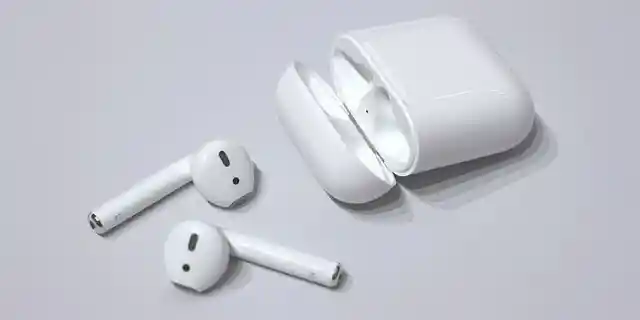

In today’s multitasking world, are you even doing it right if you’re not constantly connected via Bluetooth? When Bluetooth earbuds first showed up on the scene, it seemed like everyone was suddenly talking to themselves. And, why not? Now you can shop, work, or even hit the gym without having to hang up on your mom or best friend.
Bluetooth can definitely make your life a little bit easier, but there could be hidden consequences that can have a big impact on your health. Bluetooth is, essentially, Wi-Fi for individual connections, allowing two devices to share data over RF (radio-frequency) radiation. In recent years, the World Health Organization has stated that they consider RF radiation a “possible carcinogen,” meaning that they believe it may cause cancer.
That’s definitely not something you want in your ear all day. To reduce your exposure to RF radiation, stick to regular, wired earbuds. You might not look as fashionable, but you also won’t be pummeling your head with RF radiation for hours on end.
Glass Cleaner
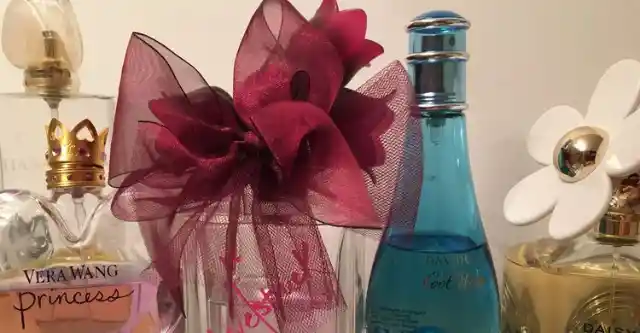
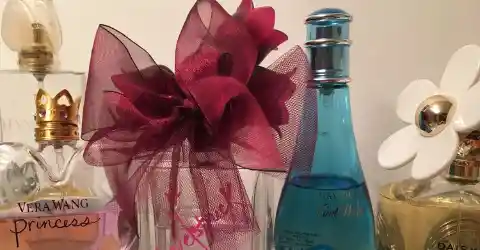
Think twice before spritzing yourself with your favorite fragrance, and the very least, read the bottle’s ingredient list. Many perfumes include hidden ingredients such as phthalates, chemicals that mimic estrogen and other naturally-occurring hormones.
Even subtle disruptions to your body’s biochemistry can harm your endocrine system, with effects that may stay hidden for decades, including male feminization, early menopause, infertility, breast cancer, and premature birth. Avoid dangerous chemicals by making your own perfumes from essential oils.
Baby Wipes
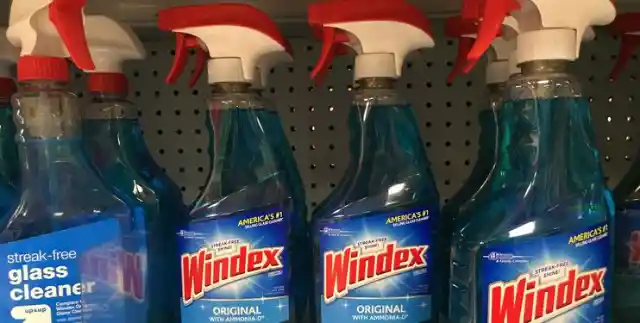
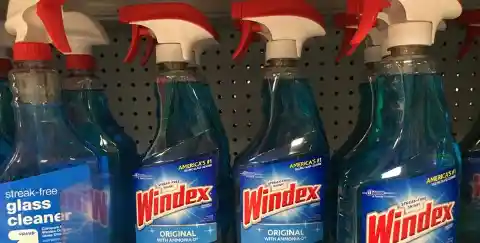
The chemicals you rely on for that streak-free shine aren’t staying put on your windows. Solvents cause them to evaporate rapidly into the air you breathe, where they can wreak havoc on your lungs and other organs.
Do you really want to breathe in 2-butoxyethanol, a toxic carcinogen linked to liver damage, kidney damage, and anemia? What about ammonia, which can cause chronic bronchitis and asthma? For clean windows and happier lungs, dilute rubbing alcohol with water and add a few drops of essential oils.
Tap Water
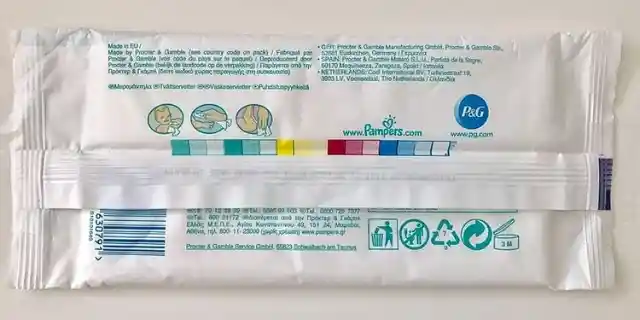
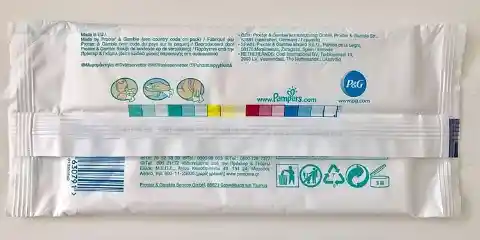
When you think about baby wipes, you might think about a soft, gentle cloth that you can use to make sure your baby is perfectly clean, before putting on another diaper. What you might not think about are the ingredients used to make that baby wipe. Lurking behind the sweet, comforting marketing, and images of a happy baby, could be some less-than-comforting ingredients.
Ingredients like bronopol and DMDM hydantoin, both of which can release formaldehyde as they break down, and are known irritants. Combine those with the artificial fragrances and parabens and you’ve got a perfect storm of things that you don’t want to put on your baby’s bum. Always check out the ingredients list when buying wipes, and be on the lookout for anything that seems suspect. If using baby wipes, some more conscious organic brands offer products with no more than 2-3 ingredients.
Artificial Lighting
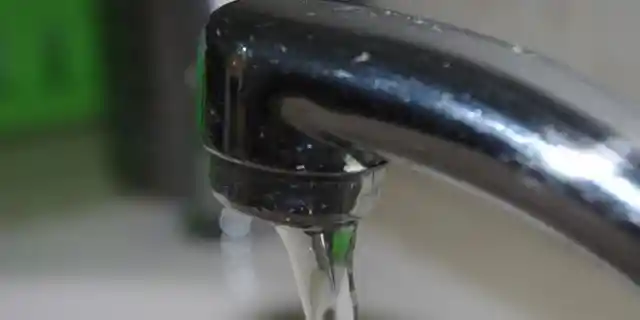
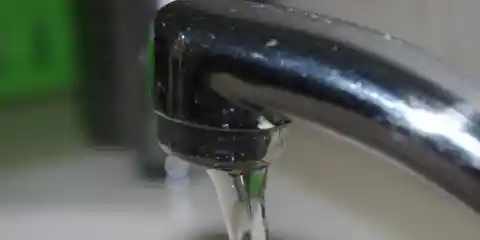
The water from your tap might look clean, but how clean is it really? You might think that clean tap water is a given, but in many parts of the world, tap water that’s free of toxins just isn’t a reality. In the U.S. alone, tens of millions of people may be exposed to tap water that’s filled with harmful chemicals like fluoride, BPA, and chlorine – and that’s just the tip of the iceberg.
Heavy metals can even make their way into your drinking water. Copper, lead, and cadmium – a widely known carcinogen found in oil paints – are just a few of the metals you could be exposed every time you do so much as take a shower. The best way to avoid unsafe tap water is to install a simple shower filter in your bathroom (and it goes without saying that it’s a good idea to have a water filter, such as carbon-block or reverse osmosis) installed on your kitchen sink. Not only will this give you peace of mind and body, but it’ll also save you lots of money in the long term.
Moisturizer


You might think that artificial lighting is safe. After all, you’re indoors and away from harmful UV rays, right? Well, studies have shown that some artificial lights can actually include some ultraviolet and infrared spectrums, both of which can have potentially negative effects on your health, causing an unpleasant, warm or burning sensation on the skin, just like a sunburn.
While exposure to infrared light hasn’t been linked to cancer like UV light, the radiation given off by IR light can alter, disrupt, and even destroy cells. If you’re not sitting under artificial lights all day, you probably don’t have to worry. But, if you spend a lot of time in an environment – like an office setting – full of harsh artificial lighting, and you start to notice skin irritation, you may have found your culprit.
To reduce your risk of irritation, or worse, research any lights you’re considering before you bring them into your home to check for UV and IR rays. Artificial lights can be particularly difficult to avoid in a workplace setting, but if you think you’re being affected, start a conversation with your employer about the lights that are being used, and what can be done to find a safer – and potentially more environmentally friendly – alternative.
Laundry Detergent
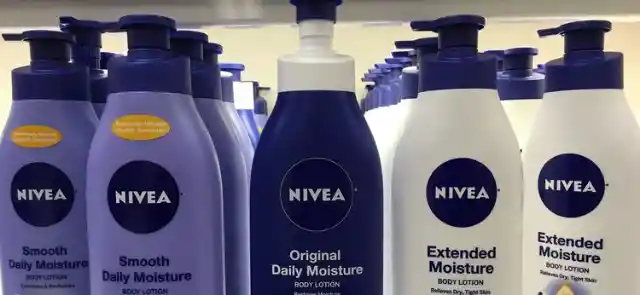
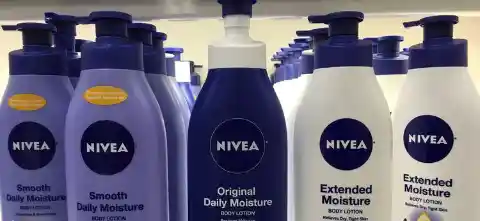
Slathering on a synthetic moisturizer only coats the top layer of skin, simply creating an illusion of hydration, but ultimately drying out your skin. Mineral oil, the most common ingredient, is a widespread contaminant. Even oil-free products can contain parabens, phthalates, and more.
Scented and unscented moisturizers both contain “fragrance,” a vague term used to mask harmful chemicals. Keep hydrated with chlorine-free mineral water, and use natural moisturizing agents like aloe or coconut oil to soothe dry skin.
Nail Polish
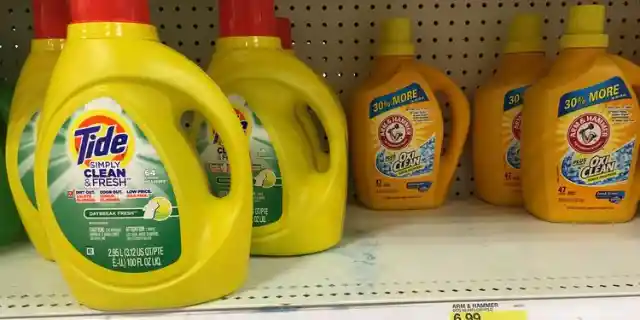
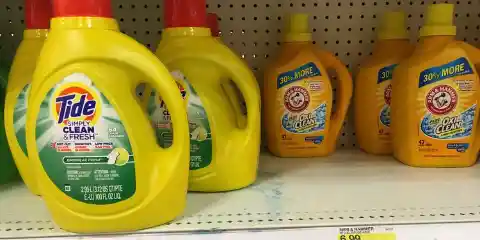
Whether wearing clean clothes or sleeping on clean sheets, you’re nearly always in contact with the chemicals found in your laundry detergent.
Unless you’d smear your skin with formaldehyde, a carcinogen and neurotoxin, or perchloroethylene, a toxin linked to cancer and birth defects among other diseases, steer clear of store-bought detergents. Soap nuts, castile soap, and laundry balls are all far safer options.
Body Wash
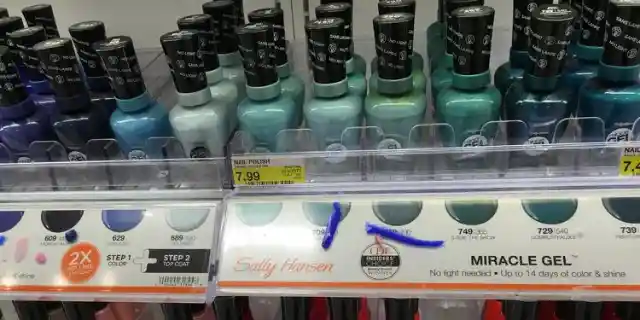
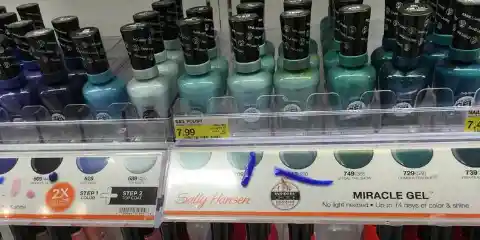
It’s no secret that nail polish has an offensive and harsh order. This scent is a harbinger of the toxic trio found within. Dibutyl phthalate, formaldehyde, and toluene form a carcinogenic trio that causes harm to your liver and disrupts your hormones.
There are a handful of less toxic options on the market, but even those should be used on rare occasions and never while breastfeeding or pregnant. Instead, use coconut oil regularly to keep your nails healthy and shiny.
Shaving Cream
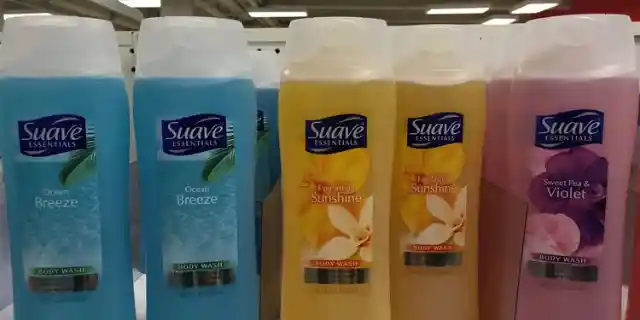
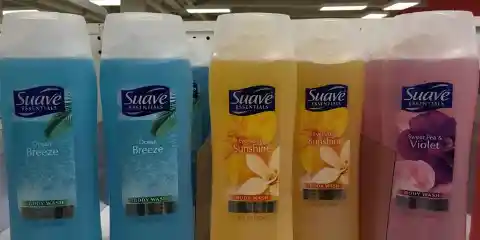
Big companies would love for you to believe that the sudsy soap on your shower loofah is getting you clean, but that foaming is the result of surfactants. These chemicals harm the protein structure and enzymes found on your skin.
Add to the mix fragrance, sulfates, parabens, phthalates, and mineral oil, and you’re scrubbing your body with a concoction of toxic chemicals. Fortunately, natural alternatives are easy to find. Try a bar soap made from coconut oil or shea butter, and exfoliate with a dash of salt or sugar.
Hair Dye
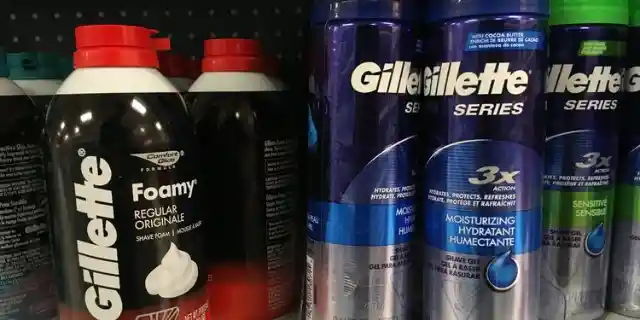
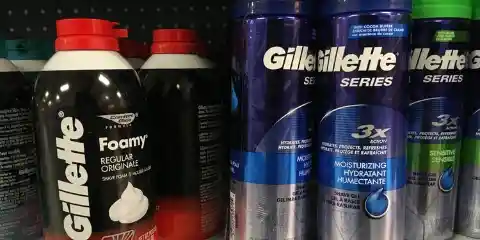
Shaving cream includes many of the toxins found in body wash and shampoo, with a few additional offenders. Polytetrafluoroethylene is a likely carcinogen that becomes a poisonous gas at high temperatures, so unless you’re taking ice baths, you probably want to steer clear.
If that’s not enough to scare you, take a closer look at toxic ingredients like glycols, BHT, and triethanolamine. Instead of these cans of foaming poison, make a homemade alternative with aloe, castile soap, water, olive oil, and grapefruit seed extract.
Baby Powder
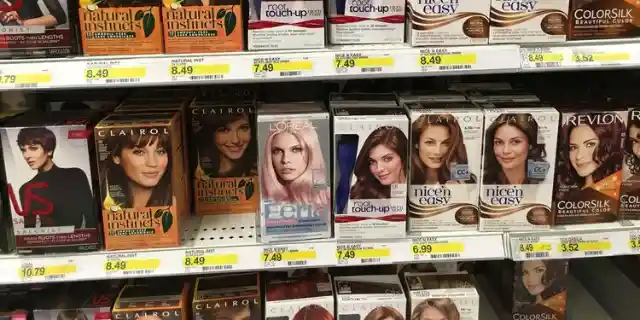

Take the pungent smell and burning sensation of hair dye as a warning. These products include a host of toxic chemicals. Aromatic amines are often mutagenic, meaning they actually alter the DNA found in your cells, a worrisome quality and possible cause of cancer.
Other ingredients have been found to be toxic to your cells (Basic Red 51) and linked to kidney disease (paraphenylenediamine). If you still aren’t ready to embrace your natural color, try herbal dyes or henna instead.
Mouthwash
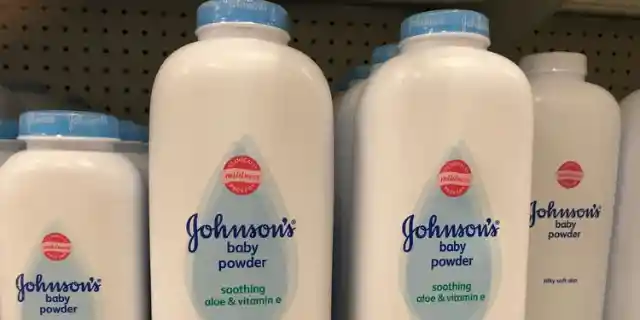
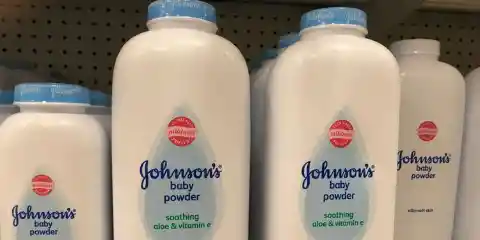
Don’t let the fact that baby powder should be safe for infants fool you. This widely used product contains harmful fragrances and talc, an ingredient frighteningly similar to asbestos that has been linked to the thickening or scarring of lungs and other tissues.
Think twice before sprinkling baby powder on your bikini line, as it’s also been linked to ovarian cancer. Instead, soothe chapped skin with coconut oil, talc-free baby powder products, or even a simple homemade concoction of arrowroot starch and chamomile.
Lipstick
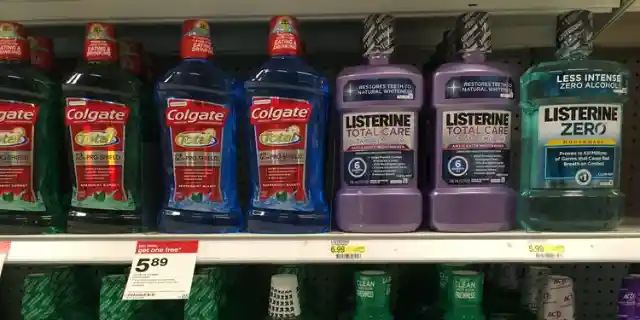
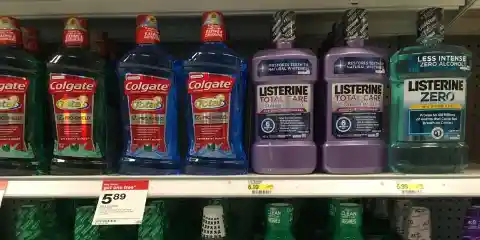
Ever taken a swig of mouthwash only to find your breath needs to be freshened up again within a few hours? Alcohol-based mouthwashes disrupt your mouth’s microbiome, causing worse breath in the long run, and have even been linked to mouth cancer.
Non-alcohol alternatives contain propylene glycol instead, an ingredient better known as antifreeze. Add in the widely debated effects of fluoride, and you’ve got a recipe for disaster. A clean diet and fluoride-free toothpaste are a far safer bet for fresh breath.
Blue Light After Dark
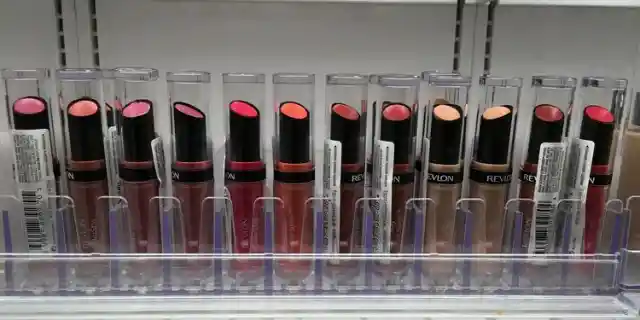
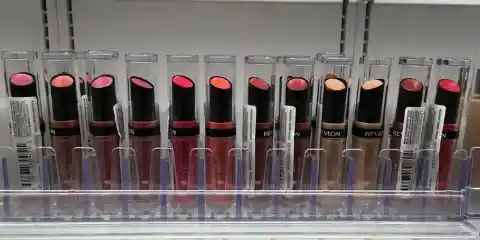
Nothing says “kiss me” quite like a toxic blend of lead and barium. These chemicals can overload your detox system and cause lasting damage to your organs. Plus, most lipsticks rely on parabens as preservatives, and these ingredients have been linked to reproductive system damage and breast cancer.
For a fun and healthier option, explore natural ingredients like powdered rose, coconut oil, fresh-pressed juice, and more, to create a wide range of products and colors that your lips will love and your body will thank you for.
Toothpaste


Blue light has become a little bit of a hot button issue in recent years. From special blue light-reducing glasses, to smartphones that come with blue light filters, it seems everyone is concerned. Is blue light really toxic, though? Well, the answer isn’t quite that simple. Blue light can be good during the day; it can help keep you awake, and full of energy.
But at night, there’s another side to blue light that’s a little more sinister. While blue light might not be toxic in a more traditional sense, like chlorine or mercury, it can be harmful to your health in other ways. Prolonged exposure to blue light after dark, when your body is winding down, can disrupt your circadian rhythm (your sleep/wake cycle), making it difficult for you to fall asleep and stay asleep.
Poor sleep can lead to impaired brain function, weight gain, hormonal imbalance, and even heart disease. So make sure to turn off all your blue light-emitting devices well before bedtime and, if you must use them, turn on your blue light filter, or invest in a pair of blue light-reducing glasses.
Air Freshener
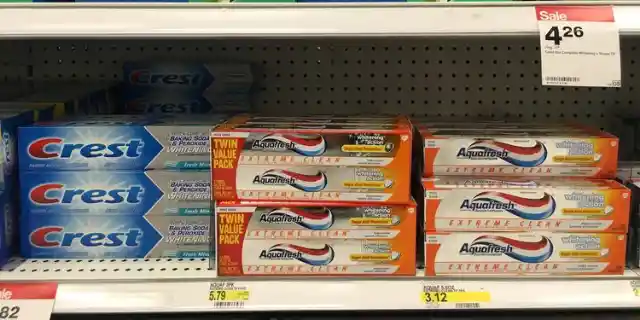
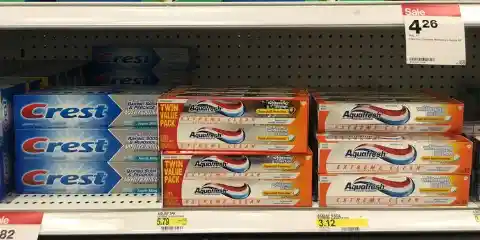
Many commercial toothpastes boast the use of fluoride to strengthen enamel. Did you know that the fluoride they’re championing is a byproduct of the aluminum industry? At best, fluoride is simply unnecessary. Studies show it may only be effective when your teeth are first coming in. At worst, it can harm your overall health, with links to thyroid problems and drops in IQ.
Fluoride-free, natural or homemade toothpastes, oil-pulling, and a mineral-rich, sugar-free diet are all far safer ways to protect your oral health.
Makeup Remover
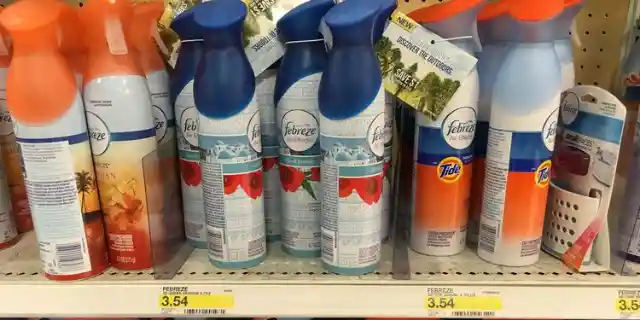

Whenever you spray the air in your home with your favorite air freshener, you’re also spreading thousands of hazardous chemicals hidden under the vague ingredient “fragrance”. One example is phthalates, a toxin linked to premature birth, male feminization, and male infertility.
Then there’s the added harm of aerosol sprays in general, which release chemical compounds linked to breathing conditions. Instead, opt for the fresh scent of natural essential oils, or absorb foul smells with baking soda.
Plastic Silverware
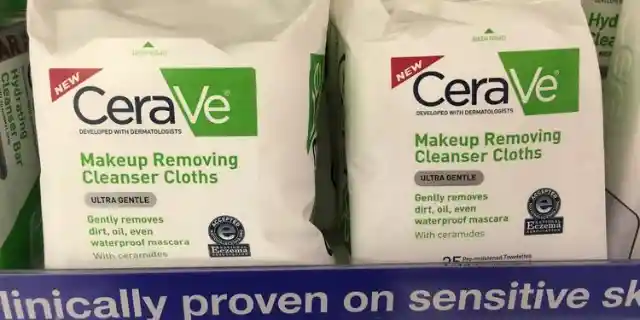
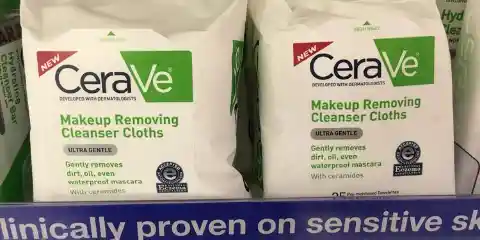
When you rely on makeup remover for that clean and fresh feeling at the end of a long day, you’re actually rubbing dangerous mineral oils into your skin. Mineral oils are a byproduct of petroleum and easily accumulate throughout your body, from your liver to the breast milk your baby relies on.
Toss this toxic product in the trash, and use avocado oil, almond oil, or coconut oil for a natural cleanser and makeup remover.
Powders


Apart from being detrimental to the environment, plastics are full of hazardous chemicals that can be harmful to your health. So, why are you still eating with plastic silverware? Sure, they’re easy to get ahold of and seem like the perfect solution for a gathering – or just because you don’t feel like cleaning – but are they really safe to use every day?
New research is showing that your plastic silverware and cooking utensils could be slowly poisoning you, especially when they come in contact with hot foods. When heated, your plastic silverware is likely leaching toxic byproducts into your food that have been linked to liver disease, infertility, and even cancer. While it might feel like the easiest or most cost effective solution, it’s best to avoid plastic silverware and cooking utensils altogether, opting for metal or wooden silverware instead. Plus, metal and wood will last you a lot longer than plastic ever could.
Household Cleaners
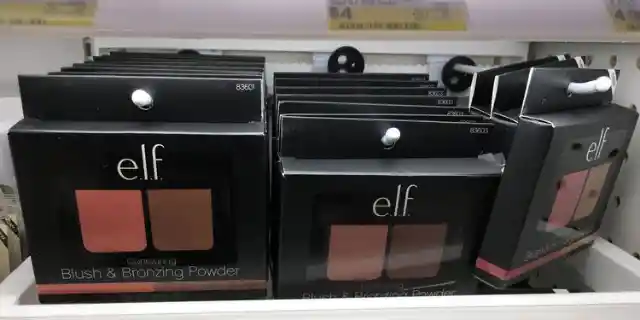
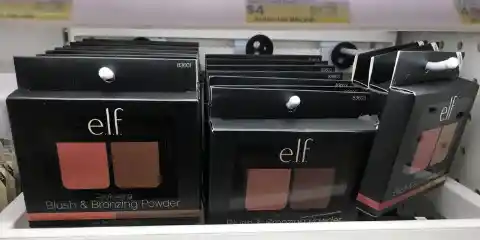
Eye shadow, foundation, blush, and bronzer are all examples of popular cosmetics purchased in a powder form that aren’t only applied to your skin, but also easily inhaled into your respiratory system. Do you really want to absorb and breathe in heavy metals like cadmium, arsenic, and lead?
These biohazardous toxins are known to be found in common makeup powders. Fortunately, it’s pretty easy to make a safe powdered makeup at home, with arrowroot starch and your choice of other natural ingredients.
Dishwashing Liquid
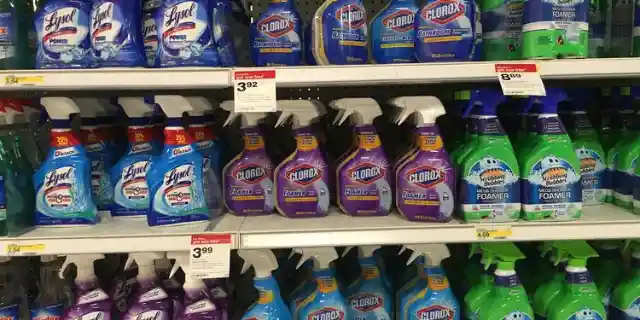
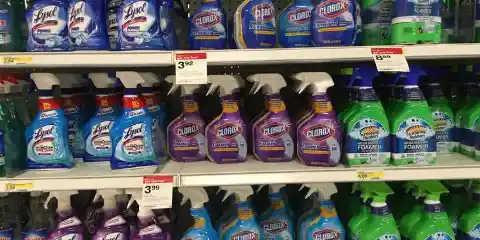
Household cleaners, including bathroom cleaner and furniture polish, are host to a wide array of harmful, toxic chemicals. Major offenders include chlorine, linked to pulmonary disease and thyroid damage, and petrochemicals, associated with nose and throat irritation, liver and kidney problems, lung tissue damage, birth defects, eye damage, nervous disorders, and more.
Natural disinfectants, including alcohol, vinegar, and essential oils, are much safer and still effective in cleaning your home.
Acne Cream
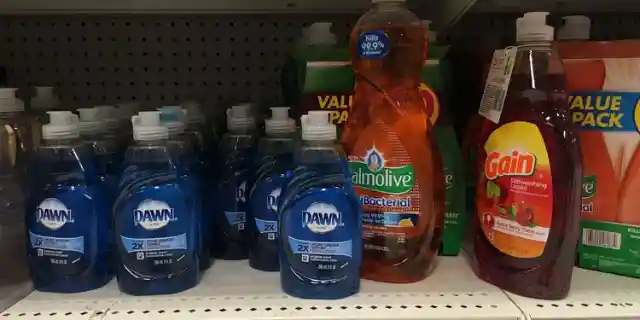
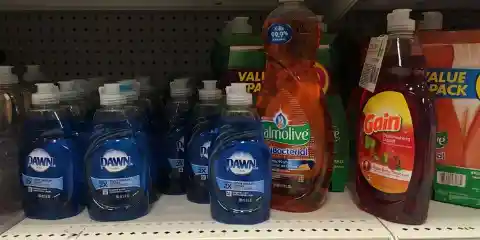
This common household cleaning product is shrouded in mystery and confusion. Listed ingredients are intentionally vague, but dishwashing liquid can include a host of dangerous surfactants, solvents, sulfates, preservatives, and more.
Get your dishes clean without the worrisome ambiguity of these toxic products, by using a homemade agent of water, vinegar, and castile soap with lemon.
Mascara
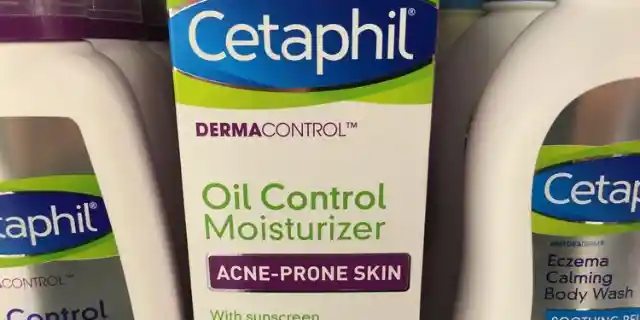
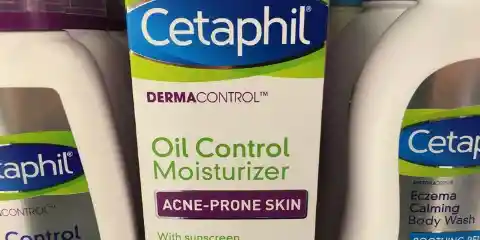
Next time you wake up to an unwanted pimple, consider holding back from reaching for any over-the-counter treatments that include benzoyl peroxide and salicylic acid. These chemicals kill unwanted bacteria, but they also dry out your skin, increase sun sensitivity, and may even generate free radicals, which promote tumor growth.
Get to the source of the problem by eliminating the major trigger foods- nuts, wheat, eggs, dairy, and chocolate from your diet, and treat the occasional breakout with essential oils like peppermint and lavender.
Liquid Foundation and Concealer
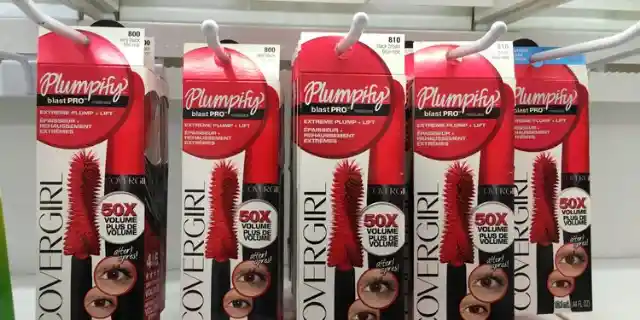
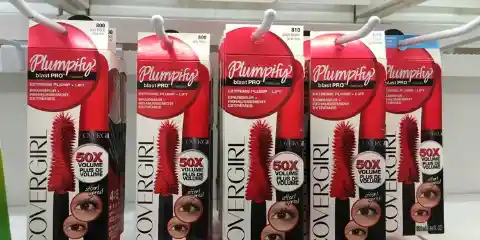
You were probably taught from a young age to keep dangerous chemicals away from your eyes, but every time you swipe on mascara on your way out the door, you’re putting mercury and aluminum right in one of your body’s most sensitive areas.
Mercury is well known for its toxic effects on your nervous system, and aluminum further inhibits your body’s ability to detoxify the mercury. Steer clear of this dangerous combination and use coconut oil for a safer shine.
Waxed Dental Floss
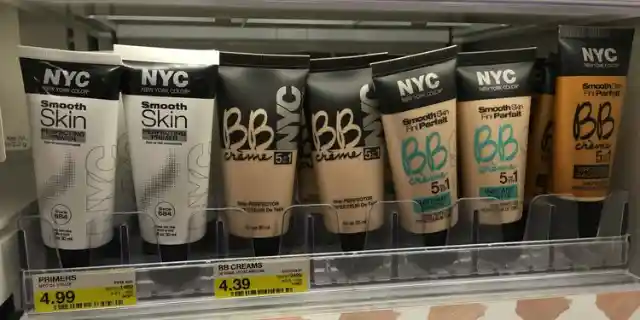
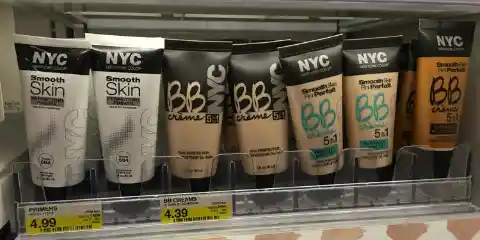
PHOTO: HEALEVATE
When it comes to cosmetics, liquid foundations aren’t any safer than the powdered options. These products’ hidden ingredients range from talc to propylene glycol to petrochemicals. Toxins like these will only make skin problems worse.
Instead of smearing your skin with harmful chemicals, get a healthy glow the natural way by soaking up some sun and sticking to a clean diet that’s free of processed fats.
Cell Phones
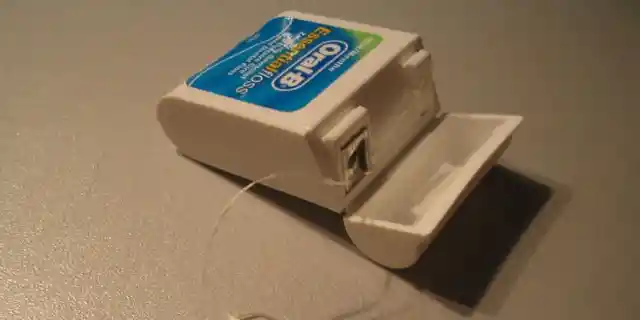
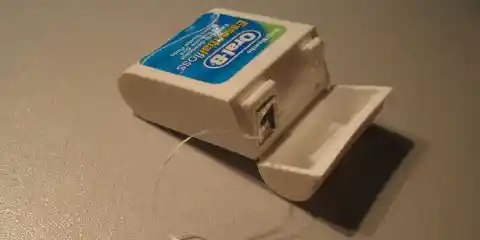
Did you know that one of the main ingredients in waxed dental floss is also used in Teflon coating? You read that right: your dental floss may be coated with some of the same chemicals used to create the non-stick effect in cookware. While you’re not really likely to swallow your floss, that doesn’t change the fact that you’re still rubbing your pearly whites down with harmful PFCs and PTFEs.
PFCs (perfluorinated compounds) and PTFEs (a polymer used in the production of Teflon) have been linked to cancer, autoimmune diseases, and an increased risk of Alzheimer’s disease. You can avoid these risks by looking for floss that’s coated in beeswax, unwaxed floss, or even consider using a Waterpik to make sure your mouth is as safely clean as possible.
Sunscreen

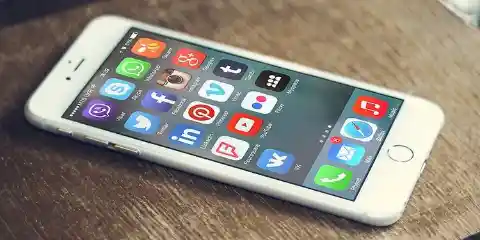
When you think about the toxic everyday items you might have in your home, your cell phone might not immediately come to mind. Sure, you might be aware that putting your phone up against your head has been proven to be unsafe at best, and an awful idea at worst. You might even be aware cell phones can interfere with pacemakers, hearing aids, and other medical equipment. But did you know that your phone could be full of toxic chemicals and metals like chlorine, cadmium, and mercury?
No, you’re not going to accidentally ingest any of this when you use your phone, but when cell phones are improperly recycled or sent to landfills, these harmful chemicals and metals can accumulate in groundwater. This can cause a chain reaction of toxicity, and damage soil, water supplies, food, wildlife, and human life. What can you do to cut down on this kind of toxic waste? To always be sure you’re properly disposing of your old cell phones, a quick web search will bring up the cell phone recycling center nearest to your home.
And on another note, a pro tip for sleep improvement: don’t sleep with your cell phone near your bed. If this isn’t something you’re willing to do, at least consider setting your phone to airplane mode every night before falling asleep, in order to avoid unnecessary EMF transmission.
Hand Sanitizer
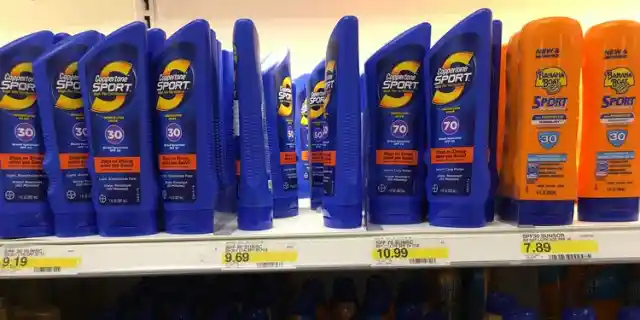

Looking to soak up the sun without the harmful effects of sunburn? Sunscreen may not be the answer. This product can numb your skin’s ability to sense when you’re getting too much sun, putting you at a greater risk for skin damage, and ultimately melanoma.
Toxic ingredients also generate free-radicals (octyl dimethyl PABA) and carry radiation directly into your cells (titanium dioxide and zinc oxide). Don’t be afraid to soak up some rays- just listen to your body and seek shade when you’ve had enough.
Wi-Fi
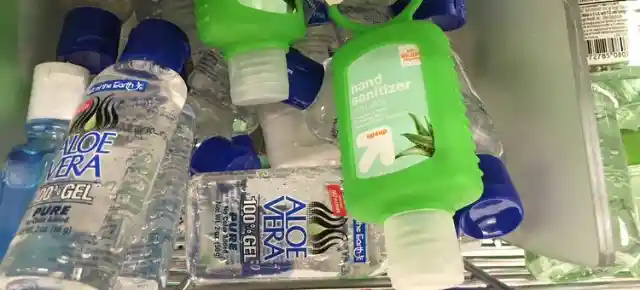
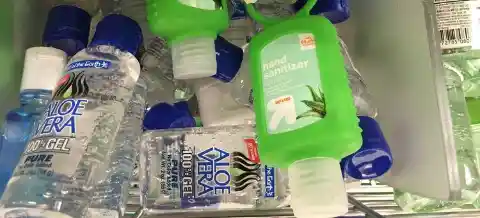
Our obsession with destroying bacteria is disrupting the microbiome, creating resistant strains of bacteria and weakened immune systems. Ingredients commonly found in hand sanitizer, such as Triclosan, create resistant mutations in bacteria, otherwise known as “superbugs.”
You could unknowingly be building an army of bacteria that makes you much sicker than the weaker bugs you were trying to avoid in the first place. The simplest way to keep your hands clean is to use plain old soap and water.
Hair Gel


Surely your Wi-Fi can’t be toxic … you can’t even see it. Well, just like your cell phone and your tap water, just because it seems clean doesn’t mean it actually is. So, what’s the big deal with Wi-Fi? Well, your Wi-Fi signal is also putting out EMFs. EMFs can cause nausea, disrupt your equilibrium, and are even thought to be linked to certain cancers.
Since the dawn of time, humans have always had some exposure to EMFs (electromagnetic fields). In fact, even people give off some form of electromagnetic field. But as technology has become more and more advanced, our exposure to these fields has increased exponentially, especially from devices that are always on – like your Wi-Fi signal. But, if it’s always there, what can you do to limit your exposure?
While it might not be possible to avoid EMFs entirely, it is possible to reduce your exposure. Instead of Wi-Fi, invest in some LAN cables to hardwire your internet connection. Keep all your Wi-Fi capable electronics – cell phones, tablets, and computers – away from your body when not in use and, ideally, turned off.
Many Air Purifiers
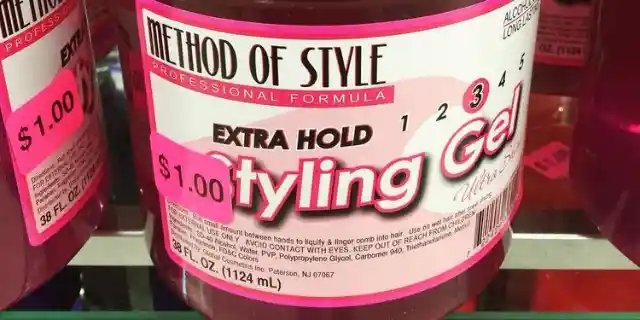
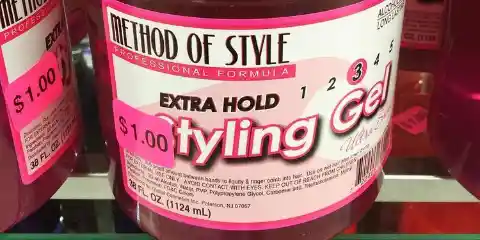
If you looked under your bathroom sink right now, would you find a bottle or tube of hair gel? If you’re like most people who like to feel their best, hair gel is probably a tool that exists somewhere in your styling arsenal. But that thick, viscous gel that you’re slapping into your mane might be doing you more harm than your ‘do is worth.
Most hair gels on the market are made with isopropyl alcohol, which is added to the product to give it the ability to hold your hair in place. If you have a chemical sensitivity, though, that alcohol might do more than just smell unpleasant. Isopropyl alcohol can cause headaches when it comes into contact with your scalp, and has even been known to cause nausea and vomiting. For a gentler, non-toxic way to tame your mane, look for styling products made with natural ingredients like gelatin or flax seed, for the same great hold without the headache.
Moldy Humidifiers
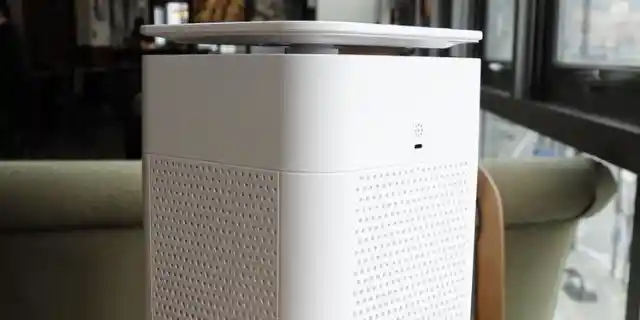
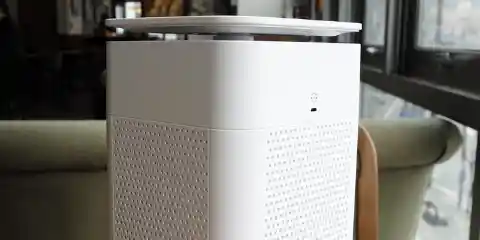
The EPA has shown that poor indoor air quality (IAQ) is a major factor in many of the health issues we face today. So, it seems like the logical course of action would be to go out and get an air purifier, right? That should be pretty easy; just go out, get a purifier, set it up in your home, and voila. You have clean, pure air that’ll make everyone in your home a lot safer and healthier. Well, maybe not…
Not all air purifiers are created equal. While many purifiers won’t directly harm you, they also may not actually be doing their job, either. According to the EPA, many air purifiers on the market lack the necessary number of filters to be effective, or may even simply not have enough of one kind of filter to remove all the toxins in your air.
The EPA recommends purchasing an air purifier with multiple layers of filters, including both a HEPA filter and at least 2.5 inches of activated carbon. It’s also recommended that you steer clear of purifiers that claim to clean the air using ozone. Studies have found that airborne ozone might not actually clean the air as well as believed, and may even cause coughs, shortness of breath, and worsen symptoms of asthma.
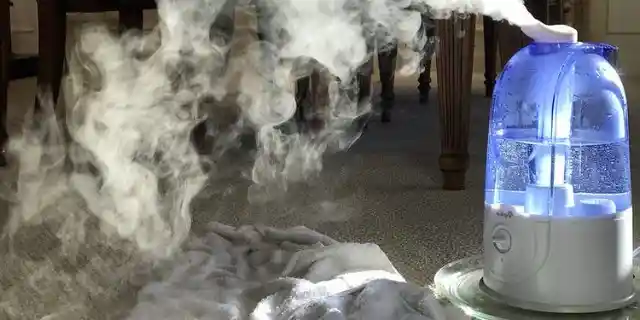
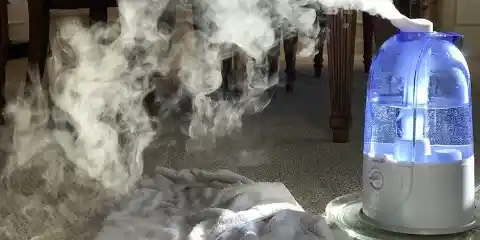
Cracking skin, bloody noses, and rough cuticles… there’s no doubt about it, dry air is not only uncomfortable, it can also weaken your body’s natural defenses against illness. Enter the humidifier, that nifty – often portable – device that can pump a little moisture back into your environment. Yet while that extra moisture can be a positive thing (who really wants dry, cracked lips?), it can also pose a serious health risk.
A wet or moist environment is the perfect breeding ground for bacteria and mold. And, if you aren’t cleaning your humidifier regularly, you could be creating an ideal incubator for mold – an incubator that gently mists that mold into the air you breathe, potentially causing flu-like respiratory symptoms or even viral lung inflammation known as “humidifier fever.”
To avoid a potentially moldy mess, it’s recommended that you clean and sanitize your humidifier weekly. Fill the tank with a weak bleach solution – no more than one teaspoon per gallon of water – and let it soak for 20 minutes, swirling the water every four to five minutes to ensure the solution covers the sides. Finally, pour the bleach solution down the drain and rinse with cool water until any bleach odor is gone. If you’re not comfortable using bleach, the EPA suggests a 3% hydrogen peroxide, 97% water solution.